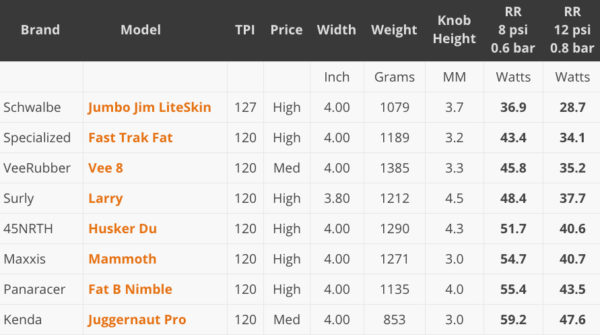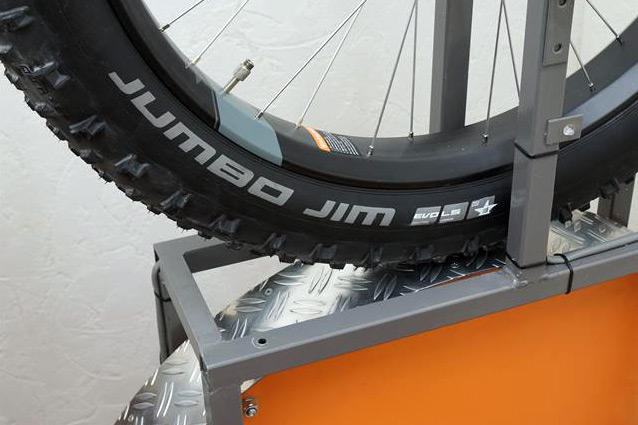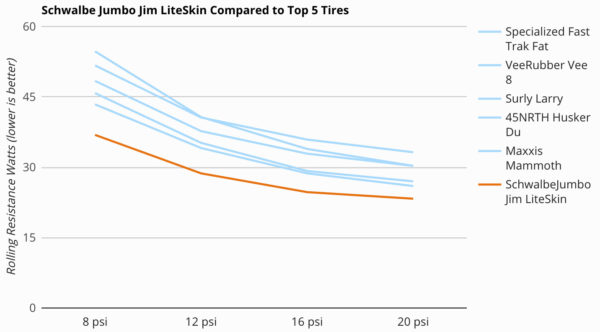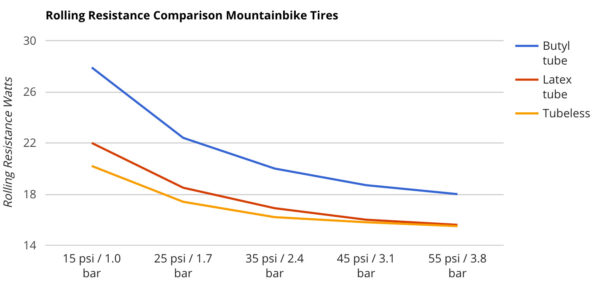No one ever says “I want more rolling resistance with my new set of tires”, but it isn’t always easy to really know what you are getting into. On road bikes it seems like there are maybe two simple questions to predict rolling resistance: is the tire expensive, and is it really light? If you answer yes to both of those, you have pretty good odds of getting a fast tire. Not guaranteed, but it’s a decent start. On the mountain bike, it seems that the correlation between high cost/low weight and low rolling resistance isn’t so clear, and when you take the leap to a fat bike, that just goes out the window.
So that’s where independent testing comes in, and no one currently seems to offer a more comprehensive list of tires with a repeatable test protocol than Jarno Bierman of Bicycle Rolling Resistance in the Netherlands. His latest round of tests pits 8 fat tires against each other to see how much 4” tires are really trying to slow you down. Check out which fat tires fare the best, and even get a look at how the real difference between butyl and latex tubes and tubeless adds up…

Looking at Bicycle Rolling Resistance‘s fat 4″ tire tests, the first thing we see is that they do generate a lot of resistance on his test drum. Sure we don’t spend much time at 18mph/29kph on our fat bikes (that is the speed he tests all tires for repeatability’s sake), but around 30-45W per tire is a lot of work to keep a fat wheel spinning. Most good 2.2″ mountain tires eat up somewhere in the 15-25W/tire range at normal pressures, and around 10-15W a piece for good road tires, so that should give a good idea of what we’re looking at.
What you can see in the fat bike results is that tire weight is in no way correlated with rolling resistance performance. Vee’s heaviest Vee 8 comes in third overall, and pretty close to number two Fast Trak Fat from Specialized. Height of the knobs also doesn’t seem to be a big factor, as the fastest Schwalbe Jumbo Jim has tread depth in the middle of the pack. What doesn’t surprise is that casing suppleness is important. Each of the tires tested uses a high-quality 120tpi construction, which is probably critical when you are already looking at such a big tire, and the better Jumbo Jim’s 127tpi LiteSkin casing might have been enough of a difference to help it win out.
The take away from all of this is really just that different tires can make a big difference in how much energy is sapped along the way. While light tires usually offer low rolling resistance, it certainly isn’t always the case with fat bike tires. Do some quick research and you may just be able to make a sizable decrease in how much energy it takes to pedal your bike around.
As to the tube vs. tubeless mountain bike debate, it’s no shock that tubeless is faster and that latex tubes have less rolling resistance than butyl. Manufacturers have been telling us that for years. It is of course nice to see that independent testing does confirm that, though. What is also interesting to see is that by just 55psi latex tubes and tubeless converge. While that isn’t really very important for mountain bikers or cyclocrossers (who would ever run pressures that high?!), we’ve heard a lot of industry talk about road tubeless being lower rolling resistance than even latex tube setups. So Bierman did those tests too, so hop over to his site to see what happened when he tested road tubeless tire against regular tires with tubes, all from the same manufacturer. Unlike on the trail where you can get away with converting a regular tire, for the road you really need a casing and bead that can handle the higher pressures and as you might expect that does not lead to lower rolling resistance. Now, we’ve been riding the open tubular style tubeless tire from Vittoria a good bit, and that definitely has a supple casing for a tubeless road tire. We’d really be curious to see where that fit in…
To be transparent, the above fat tire round of tire testing was actually sponsored by Wolf Tooth Components. Bicycle Rolling Resistance does work on advertising revenue from the bike industry, but like with Wolf Tooth who doesn’t sell anything even tire-related, the industry recognizes their independence and value, and other cycling companies seem happy to support Bierman’s work out of “bike nerd curiosity”. Bierman claims repeatability of his tests with a 5-10% room for error. While that might not seem to be overly precise, when you look back at the fat bike tire figures there is more than 60% variation of rolling resistance from the slowest to fastest tires, so it should get you to the right ballpark.



